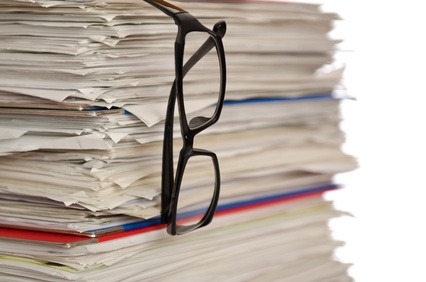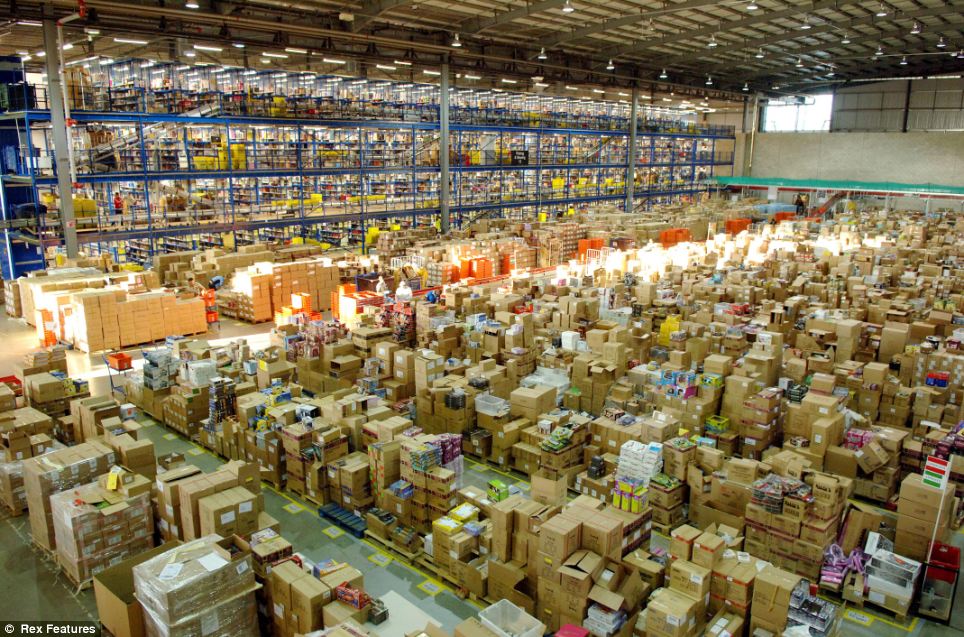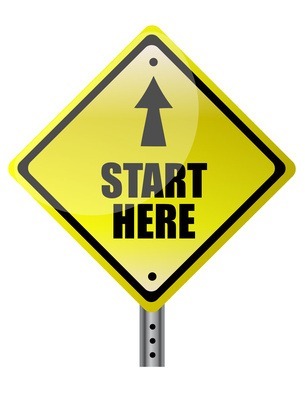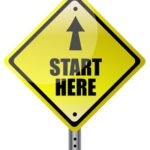
by Lori Vande Krol | Jun 12, 2017 | Organization, Tools
One of the most popular questions I get from clients and workshop attendees is how to handle the plethora of “things to read” we receive on a daily basis. This could include magazines, articles, books, email newsletters, internet-based information, or educational materials received from conferences or workshops. We collect these materials for many reasons, including:
• For research
• To stay current
• Pleasure
• Education
• Skills Development
• Idea Generation
• Project/client-related reading.
As someone who loves to read for business and pleasure, and strives to stay on top of the latest news, tools and information in my industry, I have also struggled with how to manage all of the related information. The next two Simpler Times will share techniques for dealing with this often overwhelming piece of information management. This month I will discuss general tips for managing your reading materials and share tools specifically for paper information. Next month, I will focus on tips and tools for reading information that is in electronic form.
Steps for management of reading and educational materials:
1. Gather all of your materials in one place, or make a list if that is not feasible. Sort by priority and context. For example, is it leisure reading? Is it strictly educational? Is it related to a current project? Or is it related to a project you would like to do in the future?
2. Acknowledge that you can’t read everything. Unsubscribe from magazines and newsletters that don’t provide you value. Delete or recycle information that doesn’t apply to your personal or professional vision and goals. Consider selling books at a resale store such as Half-Price Books or on www.Amazon.com. The more you can declutter your reading materals, keeping only those that apply to your current values and goals, the less stress and overwhelm you will feel.
3. Determine how and where you will store your information.
- Books and binders should be stored on a bookcase in a format that works best for you. Perhaps this is by reading type, or alphabetically. You might have a different location for books that are current reading or those you plan to read within the next 30 days.
- Magazines can be stored in magazine files on a bookcase or within a hanging filing system if they are not too large. These may also be stored by type or alphabetically. Those relating to a specific project might be stored with that project file. Magazines that are kept for leisure reading can be stored in basket or bin near where they will be read, maintaining a limit on how full that container will get before older ones are recycled or perhaps passed along to someone else. Also, consider tearing out the specific article you need and recycle the rest of the magazine.
- Articles and newsletters should be stored in a hanging filing system. There are 3 basic types of reading information kept in the form of newsletters and articles. (1) Those that are kept for leisure reading might be stored in a “To Read” file. The file can then be reviewed when you know you will have some time — for instance, on a plane trip or heading to an appointment where you may be kept waiting. (2) Articles or newsletters that are time sensitive should be stored in a location that will ensure they are read as needed. You might use a tickler file system and file the article in the appropriate date’s folder. (3) Articles related to a specific project – either current or future – should be stored in that project’s file. This “Just in Time” reading isn’t necessary until it is time! Filing it away in the appropriate location will help ensure it is not forgotten and that it will be there when needed.
4. Do you fear putting your reading materials away because you are afraid they will be forgotten? A great way to address this is to index your files and information. Indexing will ensure you can find what you need, when you need it. For this, you can use a basic Excel spreadsheet, an indexing program such as Taming the Paper Tiger or an file storage and collaboration system such as iPEP. The benefit of the last two programs are that you are able to coordinate your paper reading with your electronic files. I will cover this more in next month’s newsletter. If you would like a copy of an Excel template for indexing your information, please email me directly. In addition to an indexing system for finding your reference materials, it is important to schedule any specific tasks related to reading in your task management system. Reading related to current projects or goals should be scheduled for the appropriate date. Reading related to future projects or “someday maybe” projects can be kept on separate task lists.
5. Maintain your new system for managing reading information by setting retention dates for all information types. Determine how long the materials should be kept and stick to your plan. Periodically review your vision and objectives and make sure your “to read” list continues to fit with current goals.
Take some time over the next couple weeks to develop a system and process for your paper reading materials. You might also consider scanning much of your paper reading information to an electronic format. Or if is already in digital form, consider whether you really need to print it. And, watch for next month’s blog to learn some fun and valuable tools for managing your digital reading information.

by Lori Vande Krol | May 12, 2017 | Organization, Technology, Tools
 Last week, I found myself channel-surfing at my local gym to find the right motivational show to watch while I worked out on the elliptical machine. You may be surprised to hear that I stopped on a news story describing the inner workings of Amazon.com’s fulfillment centers (of which there are currently 80 around the world with the largest, in Phoenix, the size of 28 football fields). While you wouldn’t normally think this type of entertainment would keep someone going as they work through various levels of interval training, something the reporter said kept me listening. He said Amazon doesn’t care where its employees store the thousands of merchandise items that are put away each day. In fact, Amazon expects its workers to store things where they fit best. So if that means a box of golf balls is located next to a can of hair spray, so be it.
Last week, I found myself channel-surfing at my local gym to find the right motivational show to watch while I worked out on the elliptical machine. You may be surprised to hear that I stopped on a news story describing the inner workings of Amazon.com’s fulfillment centers (of which there are currently 80 around the world with the largest, in Phoenix, the size of 28 football fields). While you wouldn’t normally think this type of entertainment would keep someone going as they work through various levels of interval training, something the reporter said kept me listening. He said Amazon doesn’t care where its employees store the thousands of merchandise items that are put away each day. In fact, Amazon expects its workers to store things where they fit best. So if that means a box of golf balls is located next to a can of hair spray, so be it.
So how do Amazon’s Fulfillment Associates quickly find the Floating Bubbles Light-up Pen you just ordered for your child’s Christmas stocking? They use a computer system, scanners, and a set of bar codes, one on the product and one on the shelf, to inventory and index each individual item. Shelves do not need be labeled and re-labeled as products come and go. In other words, even though inventory is constantly changing, the storage system remains static. Think of the time and money Amazon saves with this system.
Now let’s take this down to a smaller scale – your own company’s warehouse or storage area, its central library, your own personal library, or your office files. Amazon’s system of static labeling and electronic indexing can apply to all of these environments. With an inventory model like this, it doesn’t matter where items are stored as long as they are labeled and tagged appropriately in an electronic indexing system. One quick search will point you in the right direction in seconds.
As an example, let’s discuss how to apply this to your paper files. First, label each file with a number (e.g. Reference 1, Reference 2, etc.). Then, use one of the following systems to index these files according to the title and contents.
- A basic Excel Spreadsheet with columns for the file number, category (if applicable), title and keywords or descriptions of contents of the file. In addition, you may customize the Excel workbook further by having separate worksheets for different information types (Action, Reference, Books, Binders, CD’s, etc.). Excel’s search feature allows you to quickly find information by title or keyword.
- Take your indexing system a step further by using a software program built specifically for paper filing and office inventory, such as Taming the Paper Tiger Software.
- An additional option for indexing of paper and other information is iPEP (interactive-Productive Environment Platform). In this cloud-based system, you can not only inventory your physical information but also store your electronic files, email, links, photos and other digital information.
Note: To learn more about each of the systems described or to learn if any of them is right for your needs, please contact Lori at Life Made Simple.
While your indexing system may not tell you exactly which path to walk to retrieve your items in the most efficient way, as Amazon’s does, it will go a long way towards creating an organized and productive environment where you can be comfortable knowing you will find what you need when you need it.

by Lori Vande Krol | Jan 12, 2017 | Organization, Time Management, Tools
 You find yourself with an unexpected day (or even 1/2-day) – maybe an appointment was cancelled, a project was completed early, or you have a sick child causing you to be at home unexpectedly. You’ve decided to take this time to do something you’ve been putting off for a very long time: tackle the paper piles in your office. You are ready to dive in, but don’t know where to begin. Following are the steps I recommend for working through those piles in an efficient and productive way.
You find yourself with an unexpected day (or even 1/2-day) – maybe an appointment was cancelled, a project was completed early, or you have a sick child causing you to be at home unexpectedly. You’ve decided to take this time to do something you’ve been putting off for a very long time: tackle the paper piles in your office. You are ready to dive in, but don’t know where to begin. Following are the steps I recommend for working through those piles in an efficient and productive way.
1. First, clear your desktop. This is normally where will find the most recent papers. It is important to start with the most current information and set up systems to deal with anything new coming in. Separate anything that is active (current projects, bills to pay, calls to make, appointment reminders, etc) from items that are reference (need to keep but not currently active). Put the reference items in a box, or pile off to the side. If there are other areas in your office that contain items that require action in the near-term, sort through those as well.
2. Next, deal with the “active” pile. Go through each paper one by one and make a decision on where it goes (remember, clutter is postponed decisions). You may need to enter something into your calendar or contact system, create a task, add the paper to your tickler file, create a new active project file or throw it in the trash. Don’t put the paper back down without making a decision.
3. Now it’s time to deal with the “reference” pile. If you have a filing system you like, then it is as simple as working through each paper and putting it in the appropriate file. If you don’t have a filing system, or are ready for something new, then you have some decisions to make. Consider a numerical system with a computerized index for easy set-up and maintenance. Or you may want to file by topic or alphabetically depending on the types of papers you are dealing with. The most important thing is to have a system that works for you and anyone affected by it. Start creating your files and put the papers in them. Note: if you don’t currently have file drawers available in your office, you can use boxes as a temporary solution. Then simply pull the files out and drop them in your long-term fling solution once you have it.
4. Depending on the amount of paper you have, you may or may not get through everything in the time that you have. Before the end of the day, schedule in time to complete the task. If you are lucky enough to get through your paper, you may move on to your desk drawers and storage closets. Sort like items together, declutter as necessary, store the remainder in the appropriate spots and label. Make a note of any new storage systems you’d like to purchase to complete your system.
As you are working through your office, write down anything that you think may help to improve your productivity in the future. For example, would you like to move towards a more paperless environment? Do you need a better contact management system? Is your email and calendar system not working the way you would like? Determine how you will address the issues and schedule in the first step towards the solution.
Last, but not least, reward yourself for time well spent and enjoy your new productive environment!



 Last week, I found myself channel-surfing at my local gym to find the right motivational show to watch while I worked out on the elliptical machine. You may be surprised to hear that I stopped on a news story describing the inner workings of Amazon.com’s fulfillment centers (of which there are currently 80 around the world with the largest, in Phoenix, the size of 28 football fields). While you wouldn’t normally think this type of entertainment would keep someone going as they work through various levels of interval training, something the reporter said kept me listening. He said Amazon doesn’t care where its employees store the thousands of merchandise items that are put away each day. In fact, Amazon expects its workers to store things where they fit best. So if that means a box of golf balls is located next to a can of hair spray, so be it.
Last week, I found myself channel-surfing at my local gym to find the right motivational show to watch while I worked out on the elliptical machine. You may be surprised to hear that I stopped on a news story describing the inner workings of Amazon.com’s fulfillment centers (of which there are currently 80 around the world with the largest, in Phoenix, the size of 28 football fields). While you wouldn’t normally think this type of entertainment would keep someone going as they work through various levels of interval training, something the reporter said kept me listening. He said Amazon doesn’t care where its employees store the thousands of merchandise items that are put away each day. In fact, Amazon expects its workers to store things where they fit best. So if that means a box of golf balls is located next to a can of hair spray, so be it.
 You find yourself with an unexpected day (or even 1/2-day) – maybe an appointment was cancelled, a project was completed early, or you have a sick child causing you to be at home unexpectedly. You’ve decided to take this time to do something you’ve been putting off for a very long time: tackle the paper piles in your office. You are ready to dive in, but don’t know where to begin. Following are the steps I recommend for working through those piles in an efficient and productive way.
You find yourself with an unexpected day (or even 1/2-day) – maybe an appointment was cancelled, a project was completed early, or you have a sick child causing you to be at home unexpectedly. You’ve decided to take this time to do something you’ve been putting off for a very long time: tackle the paper piles in your office. You are ready to dive in, but don’t know where to begin. Following are the steps I recommend for working through those piles in an efficient and productive way.
Recent Comments